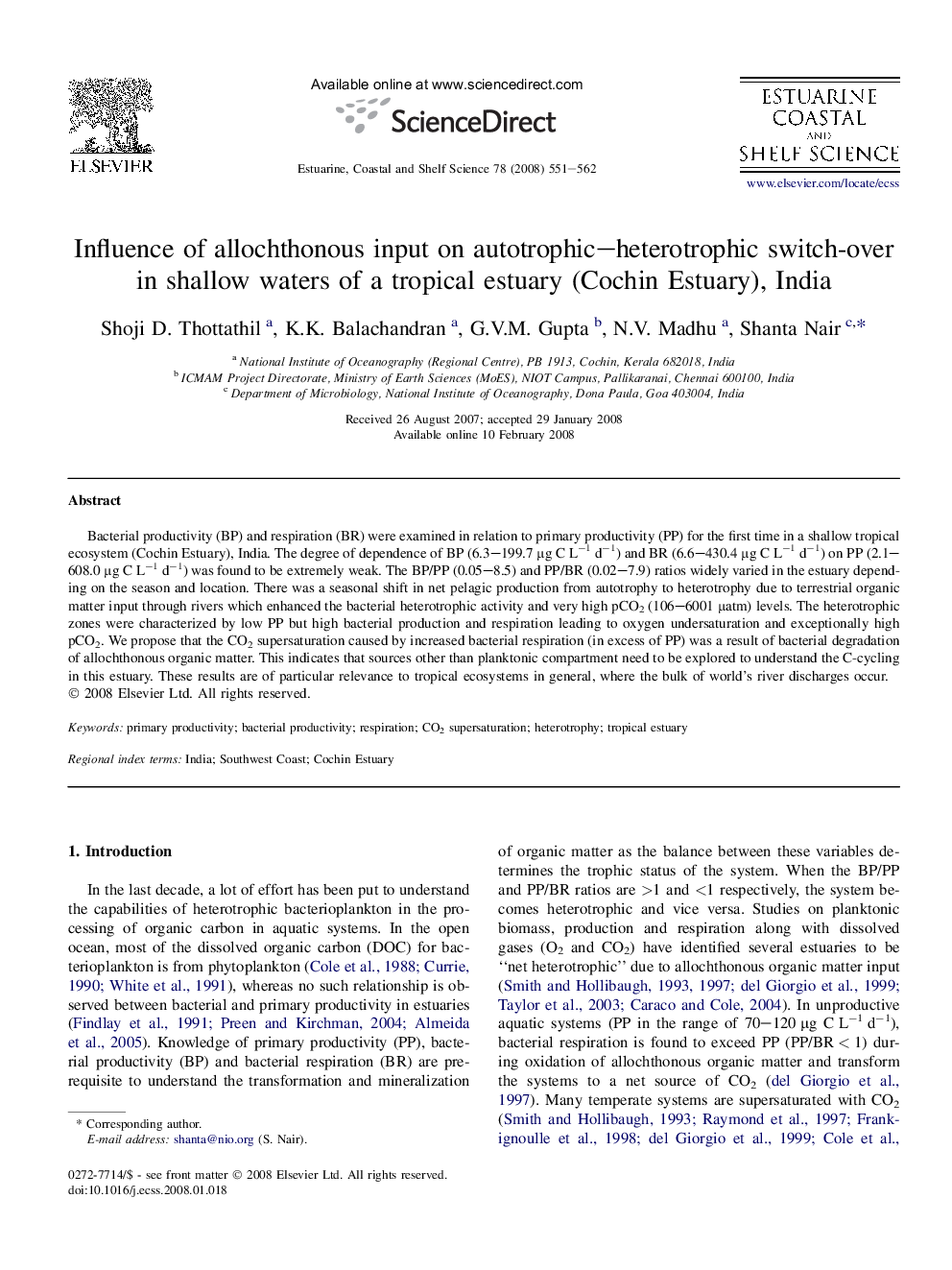| Article ID | Journal | Published Year | Pages | File Type |
|---|---|---|---|---|
| 4541926 | Estuarine, Coastal and Shelf Science | 2008 | 12 Pages |
Bacterial productivity (BP) and respiration (BR) were examined in relation to primary productivity (PP) for the first time in a shallow tropical ecosystem (Cochin Estuary), India. The degree of dependence of BP (6.3–199.7 μg C L−1 d−1) and BR (6.6–430.4 μg C L−1 d−1) on PP (2.1–608.0 μg C L−1 d−1) was found to be extremely weak. The BP/PP (0.05–8.5) and PP/BR (0.02–7.9) ratios widely varied in the estuary depending on the season and location. There was a seasonal shift in net pelagic production from autotrophy to heterotrophy due to terrestrial organic matter input through rivers which enhanced the bacterial heterotrophic activity and very high pCO2 (106–6001 μatm) levels. The heterotrophic zones were characterized by low PP but high bacterial production and respiration leading to oxygen undersaturation and exceptionally high pCO2. We propose that the CO2 supersaturation caused by increased bacterial respiration (in excess of PP) was a result of bacterial degradation of allochthonous organic matter. This indicates that sources other than planktonic compartment need to be explored to understand the C-cycling in this estuary. These results are of particular relevance to tropical ecosystems in general, where the bulk of world's river discharges occur.
